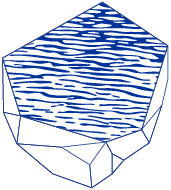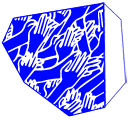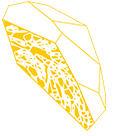
L’EASA, un réseau et une expérience
L’EASA (European Architecture Student Assembly), né en 1981, est une plateforme d’échange autour de l’architecture, autogérée par et pour des étudiant.e.s et futur.e.s professionnel.le.s, à travers toute l’Europe. Son objectif premier est de réunir des futur.e.s et jeunes architectes afin de partager leurs savoirs théoriques et pratiques mais aussi leurs approches et points de vue, offrant ainsi une plateforme éducative unique en son genre et une expérience culturelle inédite.
L’EASA se matérialise notamment au cours d’un temps fort en été, pendant lequel 500 à 600 jeunes de toute l’Europe se retrouvent dans un contexte singulier, chaque année différent. Ces deux semaines d’expérimentation collective, de réflexion à une échelle internationale et de vie en communauté constituent une expérience intense, enrichissante et marquante.

2020 chamboule tout

Les évènements de l’année 2020 ont chamboulé le monde entier, et l’EASA ne fait pas exception. L’édition 2020 devait initialement avoir lieu en Estonie, à Valga, sur le thème de l’Apathie. Face aux circonstances internationales, l’assemblée a dû se réinventer et expérimenter des formes inédites. La simple annulation du rassemblement annuel aurait été en contradiction avec les principes d’innovation de l’EASA : rechercher des pédagogies alternatives, c’est aussi savoir se questionner et se réinventer. Chaque pays a donc été invité à s’adapter en proposant différentes formes de rassemblements, à de plus petites échelles.

EASA feat. Lost&Find

La proposition des estonien.ne.s a immédiatement résonné pour le collectif Lost&Find, puisque l’EASA est le lieu de notre rencontre. Cette édition inédite nous a offert l’opportunité d’expérimenter une première fois notre travail sur l’île de Groix et de relever le challenge d’organiser, en seulement deux mois, un évènement de 10 jours autour d’un grand workshop commun dédié à l’exploration du territoire îlien et de ses ressources.
L’aventure a rassemblé une vingtaine de personnes, avec lesquelles nous nous sommes rencontré.e.s chaque semaine dès le mois de mai par écrans interposés pour passer de l’idée à la réalité. L’organisation en amont de l’évènement a été faite de la manière la plus horizontale et inclusive possible, dans le but d’éviter une hiérarchisation des participant.e.s et pour que chacun.e trouve sa place.

Groix 1 – Apathy 0

Une fois sur place, la priorité a d’abord été donnée à la découverte et la compréhension du lieu et l’exploration de ses ressources réparties en quatre catégories : Les ressources matérielles, immatérielles, climatiques et naturelles.
Pour cela, nous avons arpenté les 15 km2 de l’île pendant 3 jours, cette recherche a permis de mieux cerner ses complexités, particularités, ses habitant.e.s, ses habitudes… Toutes les informations collectées et les inspirations ont été mises en commun chaque jour, et discutées lors de temps forts de restitution, afin de décider ensemble de la mise en action de ces ressources.
3, 2, 1… Activation !
Le processus d’action que nous avons imaginé a pris la forme d’un rallye de 48H dans le but d’activer des lieux choisis et révélés par l’exploration. Ces activations ponctuelles et éphémères était un moyen de générer de nouveaux usages et rencontres sur le territoire pour en exposer et questionner les particularités.
Ces différentes interventions ont donc pris la forme de terrains de jeux éphémères, d’histoires mises en scène dans des lieux forts de l’histoire de l’île, des installations artistiques sur le paysage…



Révéler la topographie et les strates géologiques de l’île.
Faire revivre les lavoirs comme des lieux où se diffusent les histoires et les légendes de l’île.
Mettre en liens les groisillons pour remettre ensemble un bateau abandonné à l’eau.
Raconter l’histoire imaginaire de la création de l’île et de l’arrivée de ses habitants.






